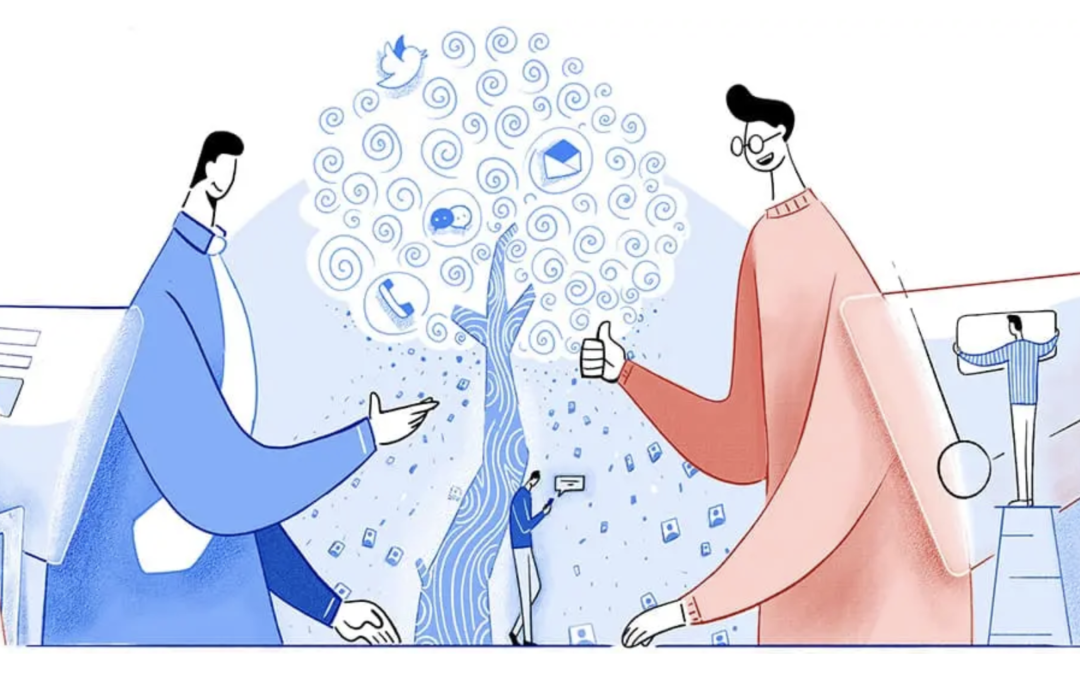
by twieberneit | Jul 7, 2020 | Analysis, Blog |
The news It is reporting season – and I am actually already somewhat late to have a look at Salesforce’s Q1 figures of fiscal year 20/21 and to think about some implications. The earnings presentation makes for an interesting overview, more details are in the quarterly filing, the earnings release, and the transcript of the earnings webcast. So, let’s get into it and look at some figures, concentrating on the company overview, result highlights, revenue and margin developments, revenues by cloud and region. Right on the first content page Salesforce states that it Is #1 CRM software provider worldwide Consistently delivers durable revenue growth Is the fastest growing top five enterprise software company Is uniquely positioned to help customer drive broad-based digital transformation Revenue is up 31 per cent (at constant currency) to nearly $4.9 billion for this quarter, which is slightly below the Q4/FY20 guidance. Operating cash flow shrank slightly to $1.86 billion year over year. The company adjusted the revenue guidance from $21 – $21.1 billion as per the Q4/FY20 down to $20 billion. GAAP earnings per share are adjusted to ($0.06) to ($0.04) from $0.12 to $0.14. Growth of FY21 operating cash flow is adjusted to 10 – 11 per cent from 20 per cent. GAAP operating margin went down by 8.5 per cent points to a negative 2.9 per cent with the non GAAP operating margin going down by 5.1 per cent points to 13.1 per cent. On the revenue distribution frontier it shows that Salesforce’s growth happens in the ‘Sales Platform & Other’ category, which vastly outpaces the other clouds already since Q4 last...

by twieberneit | May 20, 2020 | Blog, Webinar |
Many analysts, including myself, have repeatedly written about us having entered a new normal, which is enforced by a so-called green swan event – an event that according to BIS is “extremely [financially] disruptive and that could be behind a systemic [financial] crisis” (brackets set by Thomas Wieberneit). Supply chains are broken, employees need to work from home, stores were forced to close for prolonged times, and so on. This has the potential to seriously harm the base function of a business, which is helping their customers solve their problems. Looking at the pyramid of customer expectations, businesses are often barely, if at all, able to maintain its lowest level – the level of effectivity – and are far away from making it easy for their customers or even providing them with a joyful experience when interacting and engaging with them. Figure 1: The hierarchy of customer expectations Yet, we are in an era where products and services themselves get increasingly deprecated and the experience becomes the main distinguishing factor for continued success. Still not all organizations are set up to deal with this. Most are not resilient enough to fend off or at least mitigate the disruption caused by a crisis. Some organizations are affected more than others. So are the people who work in these organizations. Salespeople cannot interact with their customers in the ‘usual’ way anymore. They cannot go out and visit them currently. Customer service professionals need to change their ways of collaboration with their colleagues, they cannot just ask their neighbour anymore. Marketing Teams cannot create and host offline events due to distance and...

by twieberneit | Apr 28, 2020 | Blog |
These days, everyone, including myself, is talking about a great experience being the new differentiator. About product, and service being less and less of a factor distinguishing businesses. There is talk of customer experience, user experience, brand experience, product experience, consumable experiences, but mostly this is summed up under the umbrella of customer experience. With this, of course, businesses are reacting with creating customer experience initiatives, building strategies, and implementing solutions, from customer journey orchestration via 1 to 1 marketing solutions, or voice of customer programs. The result is significant investment and CEOs being convinced that their customers have a very good experience. Just that their customers tend to not agree to this assessment, which leads to a considerable experience gap. Abbildung 1: Experience Gap. Source Qualtrics What is the experience gap? At the end of the day, it is the mismatch between brand and product promise and delivery to these promises. This experience gap is a strong indicator that something is at odds with the assessment of the own performance. This might be a consequence of wrong KPIs, wrong measurements or, in the worst case, a wrong or failed strategy. It might also simply be a matter of confusing all these terms, that I mentioned above. So, let’s start with putting some stake in the ground by doing some definition work. Brand Experience On Techtarget we can read that brand experience “is a type of experiential marketing that incorporates a holistic set of conditions created by a company to influence a feeling a customer has about a particular product or company name.“ This is a very inside-out definition,...

by twieberneit | Mar 2, 2020 | Analysis, Blog |
End of January Zoho held its 2020 Zoho Days, an analyst summit, which I was happy to attend, along with more than 60 colleagues, as the only analyst from Germany, as it seems. Sadly, it took me quite a while to complete this – Zoho deserves a faster commentare. But hey, let’s look forward and get rolling. Zoho is a privately owned enterprise software company that has quietly evolved from a small software company in 1996 to an ambitious global player that serves the SMB- and enterprise CRM market with cloud applications. The company has a set of 45+ business apps with more than 50 million users, 10 data centres and counting, and is available in 180 countries. The company is profitable and maintained a CAGR of more than 30 percent over the past five years. But why quietly? Because Zoho managed its growth pretty unusually (almost) fully organically with only very minor acquisitions. Crunchbase lists one. Following this unique approach, which defies the traditional law of going big fast, the company managed to build a solid platform with a unified data model that allows it to crank out amazing software at an incredible speed, and with a track record of growth that is well in the double digits. Zoho offers a suite of business, collaboration, and productivity applications, supported by development environments, services and infrastructure. Besides CRM, the applications cover a good part of the value chain, including some ERP type of applications, like order management, warehouse management, or billing and project management, HR and accounting. These apps are built upon a services oriented soft- and hardware stack...

by twieberneit | Dec 2, 2019 | Blog |
After having covered some press releases about new releases and commenting some interesting organizational changes it is time to have a look at another topic – the need for consistency in a suite of cloud products. Consistency not only in the most obvious part of a family of products and solutions – the user interface – but the more important aspect of consistency, namely the data model. If you wonder how this relates to customer experience I invite you to read on. This post is actually spurred by a brief conversation that I had with Jon Reed of Diginomica about this very topic during one of the recent CRM Playaz episodes. Btw, if you do not yet listen in to the LinkedIn conversations of CRM Playaz Paul Greenberg and Brent Leary, discussing important developments and current events in the world of CRM – then you should. Really! But I digress. Back to the topic. The question is about whether it is necessary to have a unique data model or not. And this question might be answered differently, based upon the definition of ‘data model’. There is no doubt that a unique data model across applications is very helpful, actually a necessity. Where there is doubt, is whether this data model needs to be defined on database level or not in order to be really helpful. My point of view is that it does not need to be defined on database level. This point of view might be contradicting some ‘common sense’ wisdom and the strategy that some very successful companies are pursuing, including Oracle – as it seems –...






